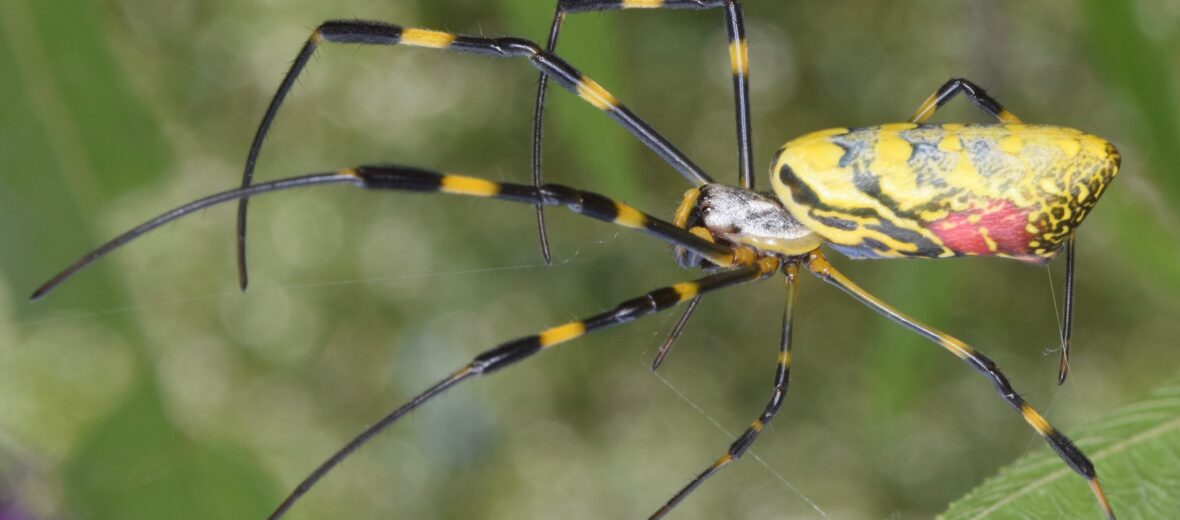
Yep. You read that correctly. A palm-sized, flying spider. The Jorō spider hails from Japan, but now it can also be found along the east coast of the United States. These large spiders have been in the United States since at least 2014. Due to the wide range, stable numbers, and potential invasive nature, these arachnids are listed as Least Concern by the IUCN.
First the Stats…
Scientific name: Trichonephila clavata
Length: Up to 2 inches, up to a 6 inch leg span
Lifespan: Up to 1 year
Now on to the Facts!
1.) Their massive, golden colored webs are built higher off the ground than other garden-based, orb weaving spiders.
2.) Jorōs prey on adult brown marmorated stink bugs (a crop damaging pest insect) and a variety of flying insects.
3.) They are preyed on by birds and mud dauber wasps.
4.) Dewdrop spiders, a kleptoparasite (steals food from other animals), have been found hanging out in Jorō webs.
5.) These spiders are part of the orb weaver family.
But wait, there’s more on the Jorō spider!
6.) Like all spiders, they are venomous, but their venom only causes sever pain and swelling at the bite location. They aren’t medically significant, unless you’re allergic to them. Which you won’t find out till you’ve been bitten, of course.
7.) Females lay up to 500 eggs, each season, in an egg sac.
Did you know…?
These clever spiders use web parachutes to fly (glide) up to 100 miles at a time from their original birth place. This is called ballooning.
8.) A group of spiders is called a group or cluster.
9.) The name Jorō comes from the Japanese spider demon.
10.) Researchers led by Masao Nakagaki at Shinshu University, in Japan, have created a silk thread that is softer, stronger, and more durable than typical silk by injecting silkworm eggs with genes of the Jorō spider. The applications for this silk are numerous.
11.) While they are technically called invasive, they don’t seem to be competing with local arachnids or other insect predators for food.
Now a Short Jorō Spider Video!
Be sure to share & comment below! Also, check out the Critter Science YouTube channel. Videos added frequently!
Want to suggest a critter for me to write about? Let me know here.




Leave a Reply